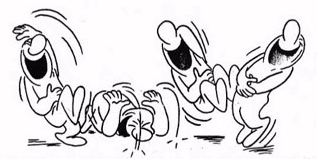
Our Cave, Our World
Humankind lingers unregenerately in Plato’s cave,
still recycling, it’s age-old habit, in mere images of truth.
But being educated by photographs is not like
being educated by older, more artisanal images.
For one thing, there are a great more images around,
claiming our attention.
The inventory started in 1839
and since then about everything
has been photographed, or so it seems.
This very insatiability of the photographing eye
changes the terms of confinement in our cave, our world.
In teaching us a new visual code, photographs alter and enlarge
our notions of what is worth looking at and what we have the right to observe.
they are a grammar and, even more importantly an ethics of seeing.
Finally, the most grandiose result of the photographic enterprise
is to give us the sense that we
hold the whole world in our heads – as an anthology of images.
— excerpt, On Photography, In Plato’s Cave by Susan Sontag p.3
Perhaps you recall
the parable in The Republic by Plato, Plato’s Cave. Humankind by dint of fate sits on a bench facing the rear wall of a cave. Light streams through the mouth of the cave, a fire’s light or perhaps from the sun. Objects that pass between the source of the light and we who are seated with our backs to the mouth of the cave, project shadows upon the rear wall opposite us. The shadows are what we see, our reality. The shadows, as inaccurate a representation as they may be, are all that we know.
The project of intellectual endeavor for all of us living in the West, since the Enlightenment (the 17th and 18th century), has been to seek progressively a more accurate representation of “the real.” The preferred method has been that of science, to ask of Nature, to ask of the world a “good” question; then begins the quest for evidence. What is a hypothesis if not a “good” question, — one that is ruled in or ruled out by evidence?
Thus we continue upon the great adventure of civilization in Europe and the Americas, and arguably in the rest of our globalized world. So how are we doing? Are the fuzzy, ill defined shadows, real-enough to us, becoming better defined, sharper, more representational? What about the brotherhood of humankind, are we more empathic, are we more collaborative? Are we less driven, agitated by submerged chthonic forces? Or expressed bluntly are we less roiled by greed, hatred, delusion?
Susan Sontag in her collection of essays on photography asserts that humankind remains on the bench facing the rear wall of the cave. We traffic in shadows, in images of “truth.” However since the beginnings of photography in 1839, our education has been in the form of the printed image, which we’ve collected in abundance. As is the case with every tool which we’ve invented, (beginning with fire) there’s been reciprocal feedback. The tool has inscribed a change in us.
Sontag says that we’ve learned a new visual code, an ethics of seeing (what is worth seeing). And what about the felt assumption that we hold everything, the whole world, as a vast collection of images in our heads?
Holding the whole world…in our heads?
I think that I am about to die laughing!
2 thoughts on “Our Cave, Our World”
Blessings Philosophers,
My contribution:
Back in the now distant past, when I was a soon to self-destruct filmmaker, occasionally spotted with an ArriS or Eclair on my shoulder, I was amazed when I was asked by young women to photograph them (still, not film, more artistic ?) with their clothes off. A pity then, that I had traded my Leica for a bag of dope.
No question that it is good to learn from experience. T. S. Eliot said that meaning is always after having had the experience.